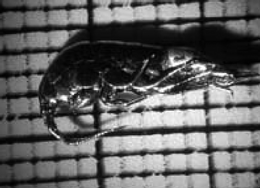Limited transfer of uranium to higher trophic levels by Gammarus pulex L. in contaminated environments
Abstract
In contrast to the classification of most invertebrate shredders being sensitive to uranium, a G. pulex L. population with reproduction was found in a stream at a former uranium mining site with uranium concentrations of 150 µg l−1 in


 Please wait while we load your content...
Please wait while we load your content...